English to German translation services:
AI-powered and
culturally precise
Scale your business across the DACH region with AI-powered English to German translation tailored to match any German variant. From software interfaces to business documents, Transifex delivers native-quality German localization that maintains your brand voice while meeting ISO standards for professional translation services.
Book your 30-min demo

Book your 30-min demo

Reach 100+ million German speakers with enterprise-grade localization
German is the most widely spoken native language in the European Union and drives Europe's largest economy. Whether you're targeting Germany's 83 million consumers, Austria's thriving business sector, or Switzerland's financial hub, quality English to German translation directly impacts your market penetration and revenue growth in German-speaking countries.
Why English to German translation requires expert precision
Converting English content to German involves complex grammar structures, cultural nuances, and regional variants that can significantly impact your message effectiveness in German-speaking markets.
Here's what makes professional German translation challenging:
Complex grammatical structures
German nouns have three genders that affect all related articles and adjectives, and four grammatical cases that change word endings throughout sentences. Compound words often make text 20 to 35 percent longer than English, requiring layout adjustments. The choice between formal "Sie" and informal "Du" also shifts sentence structure and business tone.
Regional market differences
Standard German (Hochdeutsch) is used for business across Germany, Austria, and much of Switzerland, but regional variations matter. Swiss German dialects require cultural adaptation, and Austrian German includes distinct vocabulary and references. Even within Germany, business etiquette varies by region, influencing messaging strategies.
Cultural adaptation requirements
German audiences are detail-oriented, with most consumers reading terms and conditions before purchasing. They prefer direct communication styles over the indirect approaches common in English markets. Quality and precision are expected, and trust-building takes time as consumers favor established brands with proven credibility.
Technical localization hurdles
German translations expand text length significantly, and compound words create challenges for UI design and button sizing. Companies must also account for different legal compliance requirements in Germany, Austria, and Switzerland. Payment preferences add another layer, as German consumers often favor invoice payments and localized methods.

Transifex is loved by leading organizations worldwide
English to German translation at enterprise scale with Transifex
Whether you manage localization projects, develop software, or run marketing campaigns targeting German-speaking markets, Transifex streamlines your English-to-German translation workflow without compromising quality or cultural authenticity.
Here's what makes the difference:
AI that understands German language variants
Transifex AI recognizes Standard German (de_DE), Swiss German (de_CH), and Austrian German (de_AT) following ISO 639-1 and BCP 47 standards. The system automatically adapts vocabulary, formality levels, and cultural references based on your target market—using "Handy" for mobile phone in Germany while adapting to "Natel" in Switzerland automatically.
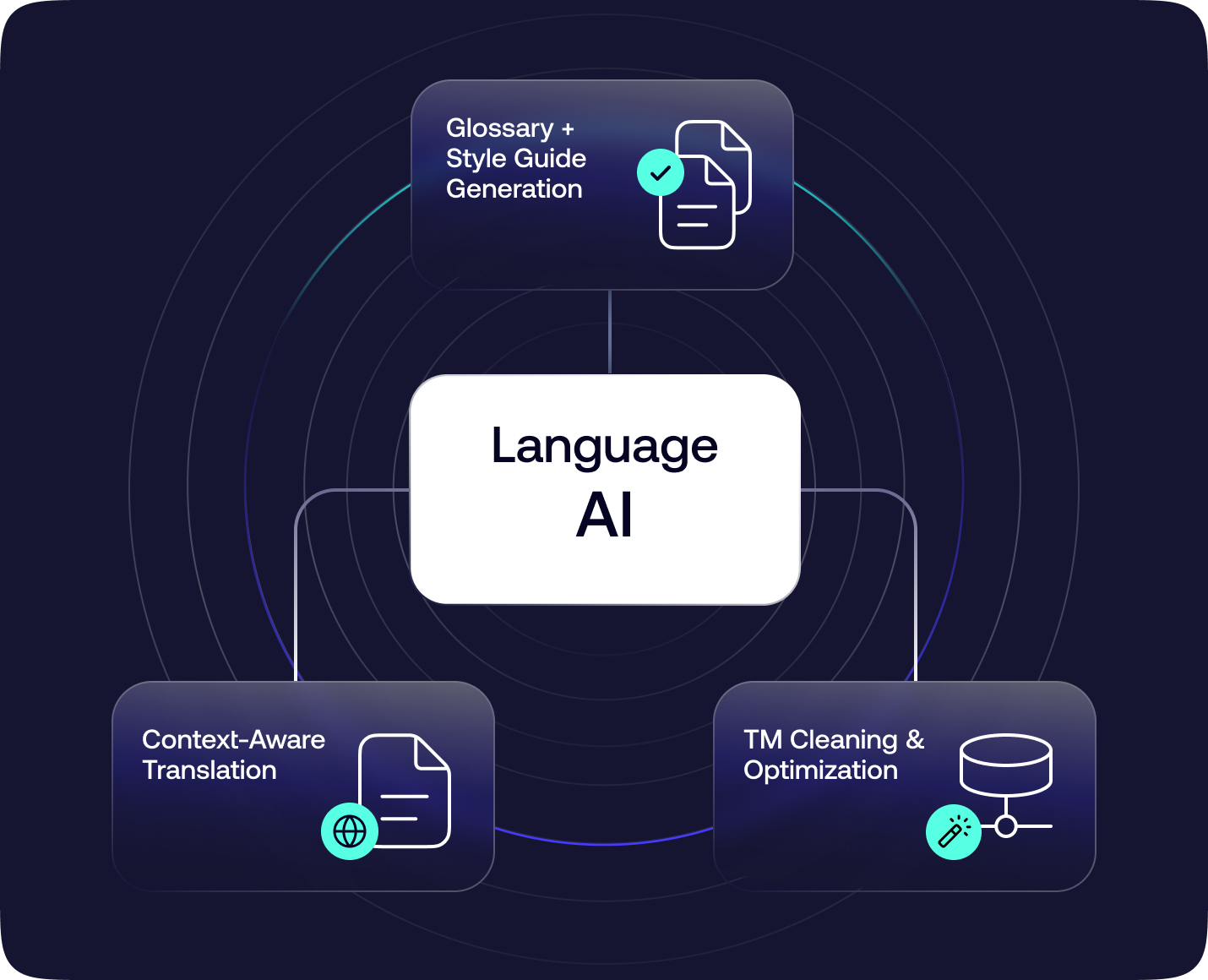
Translation Memory built for German complexity
Every approved German translation builds your terminology database using ISO/IEC 15897 standards for locale handling. When you translate "customer support" once as "Kundensupport," the system suggests it consistently across all German variants while respecting regional differences. Fuzzy matching identifies similar compound words to accelerate translations while maintaining linguistic consistency.
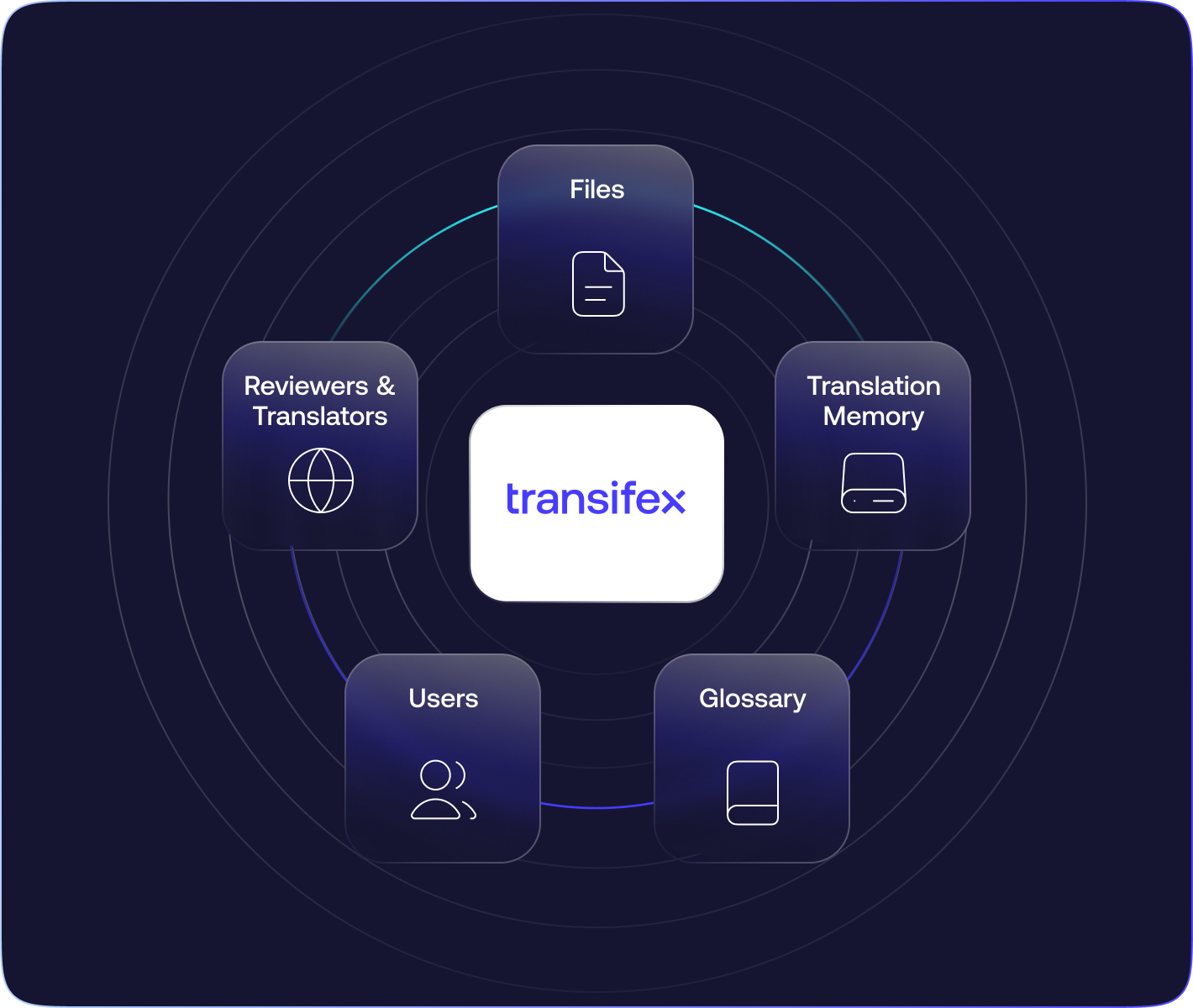
Quality scores you can trust
TQI (Translation Quality Index) automatically evaluates every German translation using three metrics: consistency across language models, structural integrity preserving HTML tags and compound word structures, and semantic accuracy. Set thresholds to auto-approve high-quality translations (85%+) while flagging complex German grammar issues for human review.
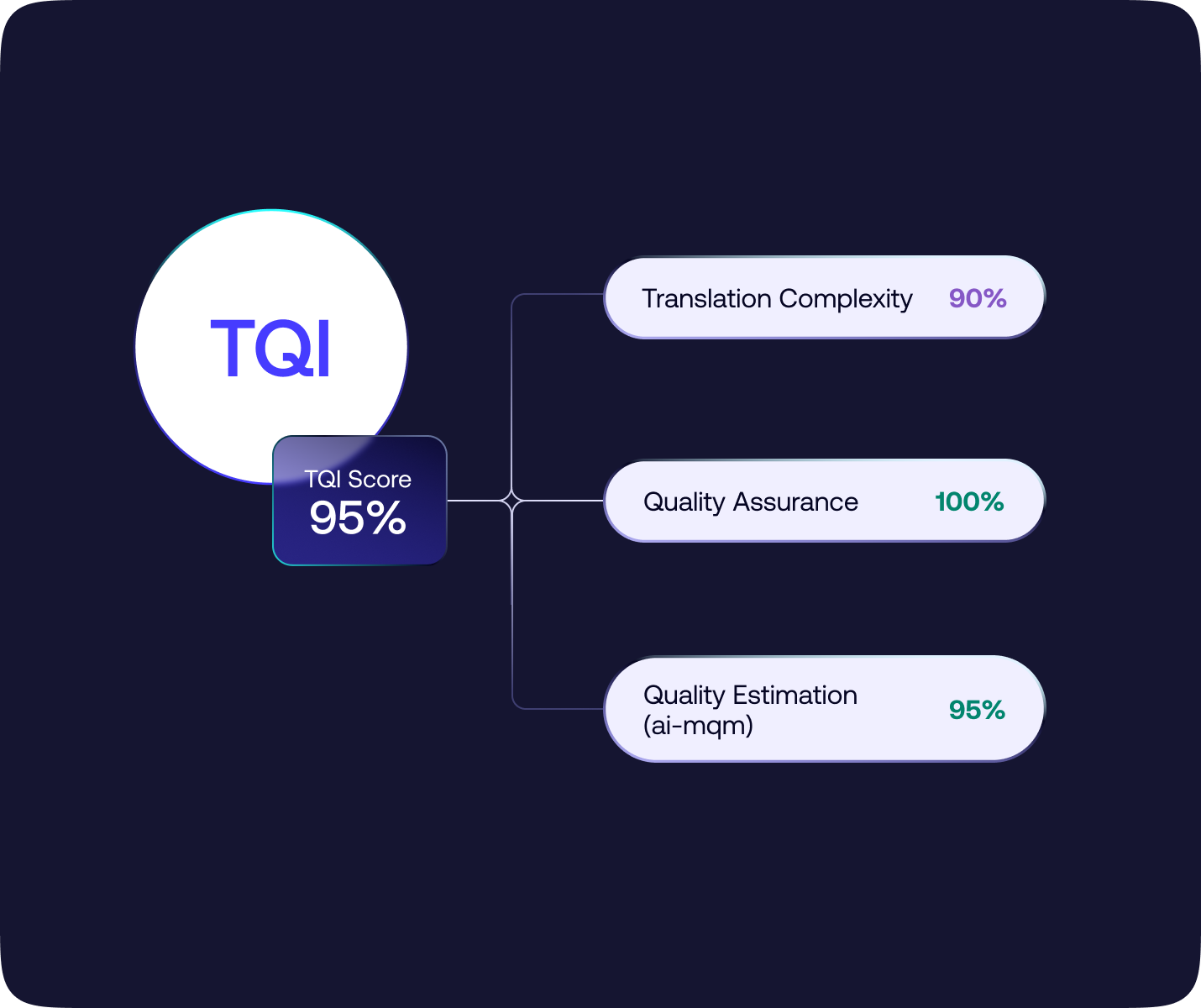
Live website translation
Install one JavaScript snippet and translate your website directly in the browser. See exactly how German text expansion affects buttons, menus, and content areas in real-time. Changes go live immediately without developer involvement—perfect for marketing campaigns targeting German-speaking markets across the DACH region.
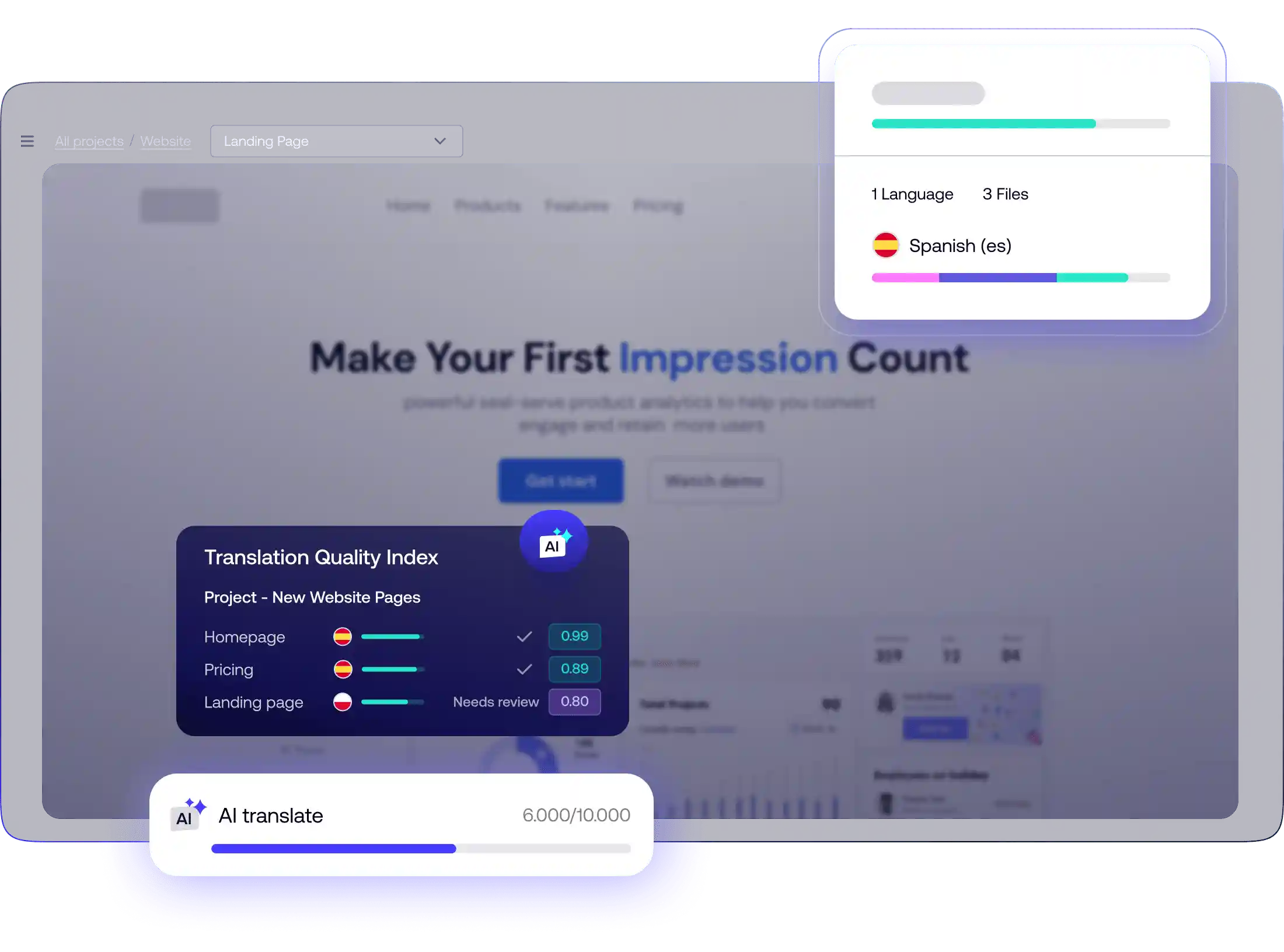




AI translation that understands German linguistic complexity
Transifex supports over 450 language locales following ISO 639-1 standards, including distinct German variants like de_DE (Germany), de_AT (Austria), de_CH (Switzerland), and de_LI (Liechtenstein). The AI recognizes when to use "Rechner" vs "Computer" for computer, or "Apfelsine" vs "Orange" depending on your specific German market.
Transifex features designed for German localization excellence:
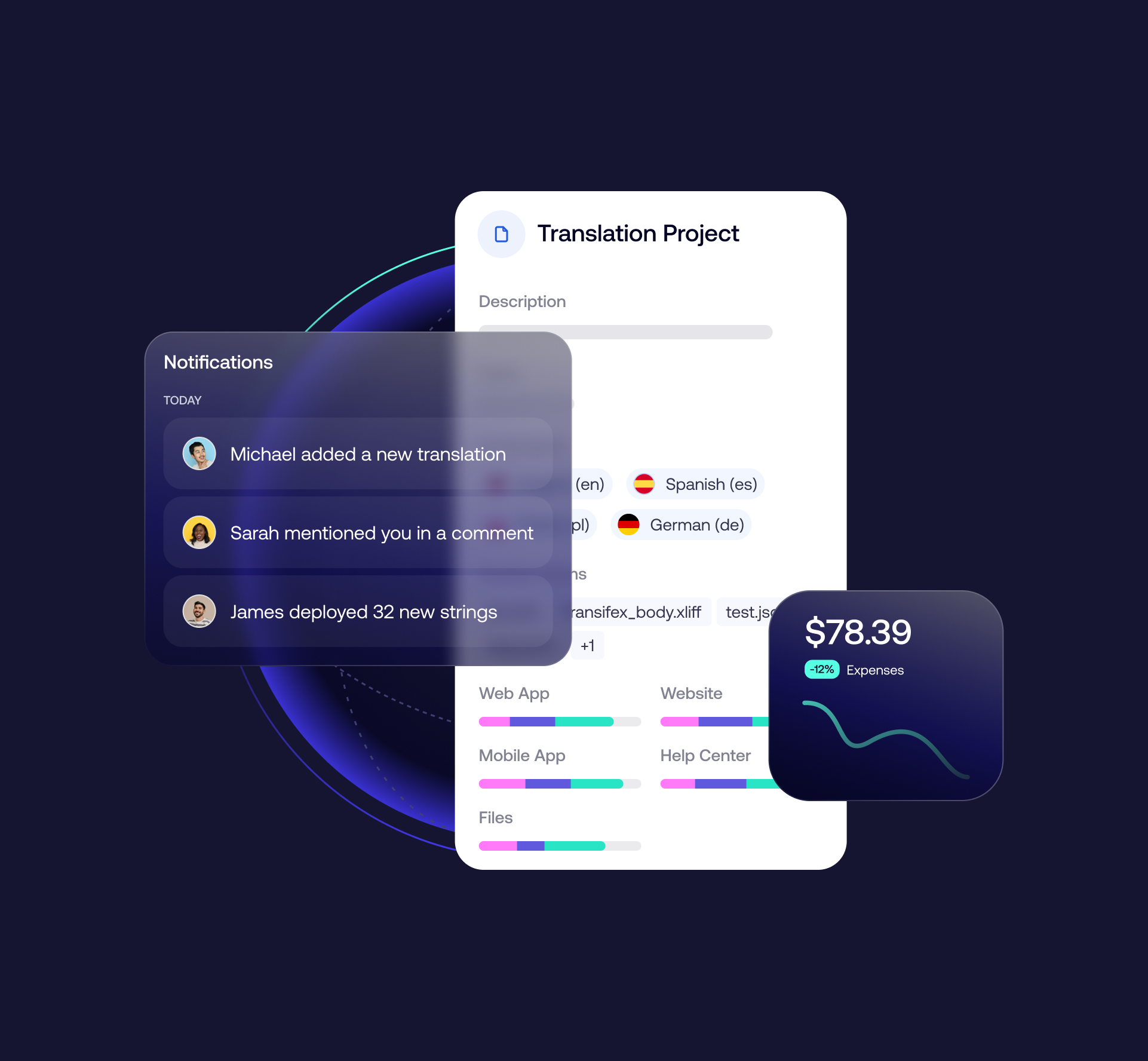
Complete project management
Set up automated workflows for German translation projects using Unicode CLDR data for proper pluralization handling. Configure TM fill-up to instantly apply 100% matches from your German translation memory. Enable AI fill-up to translate new content automatically while respecting German compound word formation. Assign roles to certified German translators, reviewers, and project managers with appropriate permissions for different DACH markets.
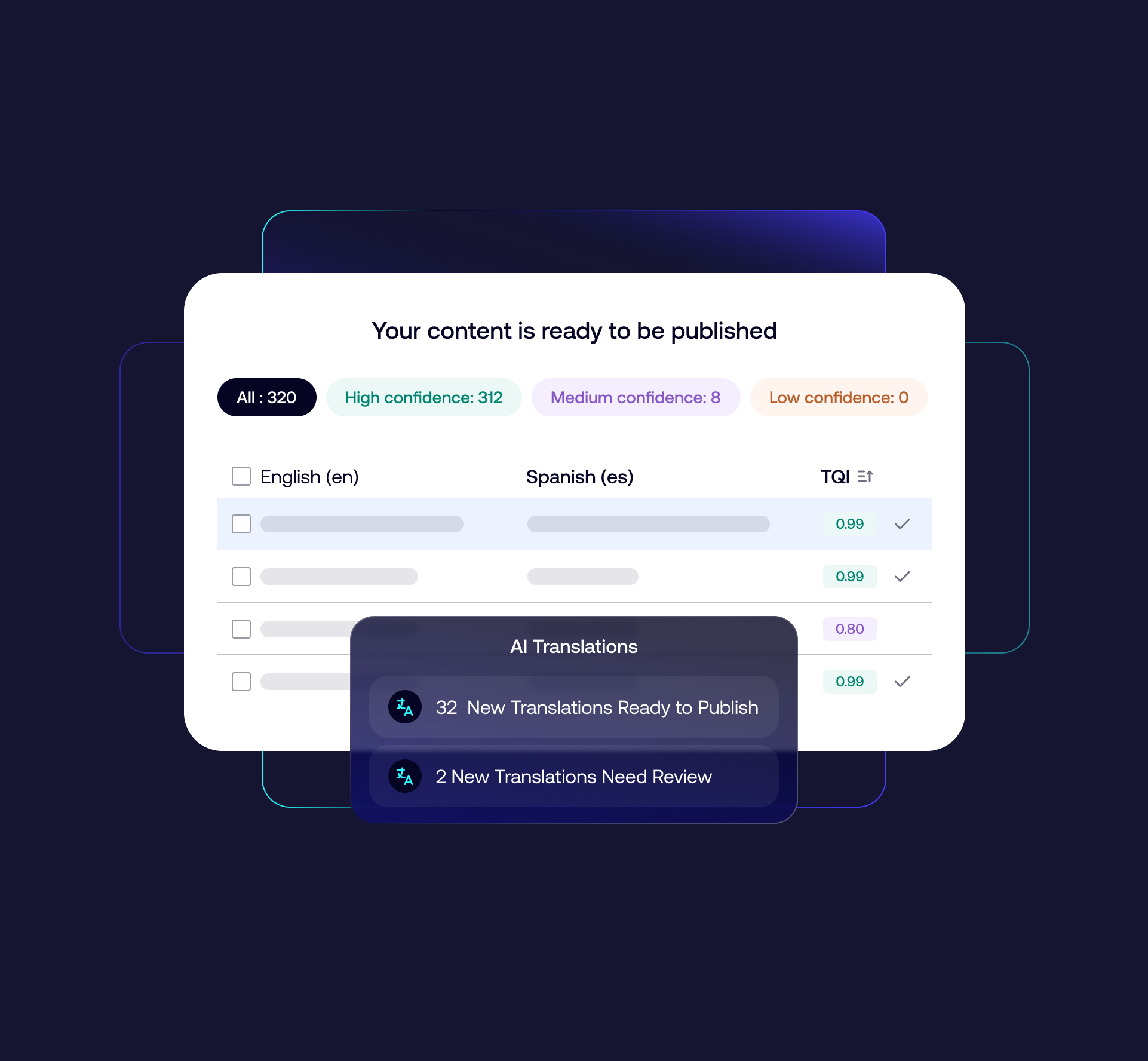
Context-aware AI translation
The system analyzes your German glossary for consistent terminology, references high-similarity translation memory entries, and follows your German style guide instructions. Whether you need formal business German for B2B documents or conversational German for consumer marketing, the AI adapts accordingly while maintaining brand consistency across German-speaking regions.
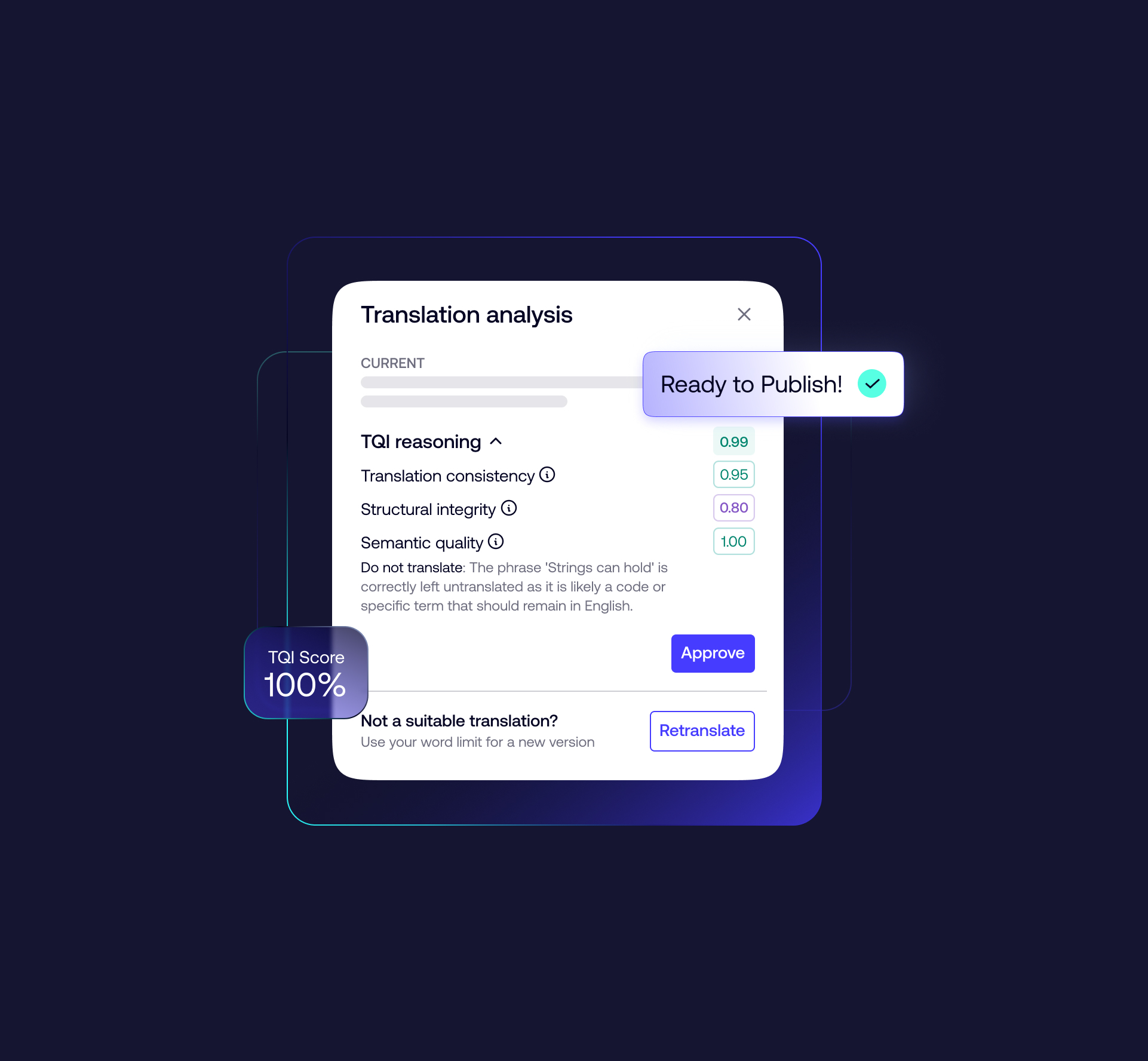
Automated quality control
TQI identifies specific issues like German grammar inconsistencies, compound word formation errors, or cultural appropriateness concerns for different German markets. Configure workflows to auto-approve high-scoring translations (85%+), route medium-scoring content for quick review by native German speakers, and flag low-scoring translations for comprehensive revision. Track quality trends to improve future German translations.
Built for product, marketing, and localization teams alike
Localization Managers
More efficiency, more localized German content
Localize more German content with less effort on an all-in-one platform. Bring all stakeholders together, streamline collaboration, and deliver authentic, on-brand German translations efficiently for every DACH market while maintaining ISO 17100:2015 quality standards.
Marketing Managers
Launch German campaigns faster
Create localized German content that matches your brand voice across Germany, Austria, and Switzerland markets. With context-aware translations, marketing teams can move fast, stay consistent, and never miss a campaign window targeting German-speaking audiences—no dev help required.
Developers
German localization built for agile teams
Take German localization off your backlog with a platform built for high-frequency content updates. Seamlessly integrate into your CI/CD workflow using our extensive API, SDKs, and CLI tools with full ISO standard compliance for German locale handling.
Product Teams
Launch multilingual products faster
Accelerate product launches with automated German localization. Integrate seamlessly into your development workflow and ensure your applications speak every German dialect from day one with proper locale handling for the entire DACH region.
The only localization platform with native support for over 46 different content types
Translate any type of English content into German—no conversions or plugins needed.
Web and
mobile UI
YAML (.yaml/.yml), JSON (including structured JSON), Gettext PO/POT, Android XML, Apple .strings / .stringsdict—supports German compound word handling
Technical documentation
Markdown (.md / .mdx), Wiki markup (.wiki), XLIFF (.xliff/.xlf/.xml)—perfect for German technical manuals
Marketing
assets
PowerPoint (.pptx), HTML / XHTML, Landing pages—handles German text expansion automatically
Fileless (API-based content)
Phrase-based localization from APIs, Figma plugin, HubSpot—uses ICU syntax, supports German metadata, and exports as JSON or XLIFF
Business and legal documents
Microsoft Word (.docx), Excel (.xlsx/.xlsm/.xltx/.xltm), PDF (via conversion)—ideal for German legal compliance
Subtitles and video captions
SubRip (.srt), SubViewer (.sub), YouTube captions (.sbv), WebVTT (.vtt)—translated in-context with built-in editor preview for German voice-over projects

Scale German localization—without the headaches
Transifex helps you translate English to German with speed, precision, and automation—all while maintaining brand consistency and cutting manual work.
Launch new content, reach German-speaking markets, and scale your multilingual strategy with confidence across the entire DACH region.
Frequently asked English to German questions
Still got questions? Talk with the Transifex team to see how you can improve the quality of your German translations and save money.
How many people speak German globally?
German is spoken by approximately 100+ million people worldwide as a native language, making it the most widely spoken native language in the European Union. Germany accounts for 83 million speakers, Austria has 8.9 million, and Switzerland has 5.6 million German speakers.
What's the difference between Standard German and regional variants?
Standard German (Hochdeutsch) is the official language used in business across all German-speaking countries. Swiss German has distinct vocabulary, Austrian German includes specific terminology, and various dialects exist regionally. For business localization, Standard German works across all markets.
Why is German important for European business expansion?
German represents Europe's largest economy with a GDP of €4.12 trillion and serves as a gateway to the broader European Union market. The DACH region combines economic powerhouses with high purchasing power, making German localization essential for European market penetration.
How does Transifex handle German compound words and text expansion?
Transifex AI understands German compound word formation and automatically handles text expansion challenges. The platform recognizes that German translations typically run 20-35% longer than English and alerts designers to layout adjustments needed.
What industries benefit most from English to German translation?
Manufacturing, automotive, pharmaceutical, financial services, and technology industries see significant benefits from German localization. Germany's strength in B2B markets creates opportunities across technical documentation, software localization, and business communications.
Can Transifex handle certified German translations for legal use?
Transifex supports professional German translation workflows that meet ISO 17100:2015 standards. Our platform enables certified German translators to work with legal documents, business contracts, and technical manuals while maintaining consistency and accuracy.
How long does English to German translation take with Transifex?
Translation speed depends on content volume and complexity. Transifex AI provides instant German translations with TQI quality scoring, while human review processes can be automated based on quality thresholds. Most projects see 70% faster completion times compared to traditional workflows.
Learn more about scaling your software localization efforts
Software localization is more than the translation of your product UI. Different language settings, plural forms, frameworks used and visual relevancy factors are only a few other things to consider.




